tl;dr
- Implement a structured approach to collect diverse types of customer feedback (direct, indirect, and inferred) to understand and enhance the omnichannel customer experience.
- Regular collection and customer feedback analysis are essential to identify pain points and drive product development, aligning offerings with customer needs for a customer satisfaction guarantee.
- Set clear, measurable objectives for your customer feedback strategy, supported by relevant customer experience metrics and KPIs like higher response rates, improved NPS, and CSAT scores, to track and measure customer experience effectively.
- Choose appropriate customer feedback methods (such as user surveys, online customer reviews, social media, and direct interactions) to ensure a comprehensive understanding of customer perspectives across different touchpoints.
- Analyze and act on the feedback systematically, prioritizing based on impact, and use this insight for continuous improvement, product prioritization, and customer-centric decision-making.
Are you struggling to tap into your customers' thoughts and experiences effectively? Discover how to leverage customer feedback tools to collect invaluable insights, drive strategic decisions, and foster meaningful connections with your customers. By reading this guide, you'll learn how to implement a feedback system that effectively collects, analyzes, and acts upon customer input, helping you make informed decisions that can increase customer satisfaction and business success.
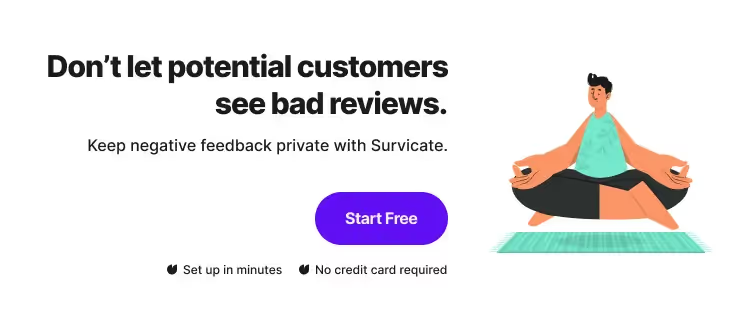
Understanding Customer Feedback
Customer feedback is a critical component of any business strategy, offering valuable insights that can shape product development and improve customer service. It's essential to grasp not only the varieties of feedback available but also why it's beneficial to actively seek it out and the advantages a thorough feedback strategy can bring.
Types of Customer Feedback
Customer feedback provides direct insights into the customer experience and required improvements. There are several different types of customer feedback you can leverage to achieve your goals such as:
Direct Feedback
This is the most straightforward form of customer feedback obtained through deliberate solicitation from the customers. Obtained through surveys, questionnaires, and direct inquiries.
Indirect Feedback
Often more subtle, indirect feedback is gathered from channels where the customer might not communicate directly with the company but still shares their opinions. Gathered from social media, customer reviews, and other online platforms.
Inferred Feedback
This type of feedback is derived from data analytics and involves no direct communication from the customer. Instead, it is based on their behavior and interactions with your business.
Why You Should Collect Customer Feedback?
Identify Pain Points
Regularly gathering customer feedback is crucial for pinpointing specific issues that customers may face with your product or service. Understanding these pain points allows you to address them directly, which can lead to increased customer satisfaction and loyalty.
Drive Product Development
Customer feedback serves as a guiding light for product development. By integrating your customers' opinions and suggestions into your development process, you can ensure that the enhancements and new features you introduce resonate with your target audience and meet their needs more effectively.
Benefits of Comprehensive Customer Feedback Strategy
Enhanced Customer Experience
Implementing a comprehensive customer feedback strategy enables you to systematically collect, analyze, and respond to customer input. By doing so, you show your customers that their feedback is valued and taken seriously. This can lead to an enhanced perception of your brand and a better overall customer experience.
Continuous Improvement
A well-structured customer feedback loop is essential for the continuous improvement of your business operations. It creates a dynamic where customer responses directly inform you what changes might be the most beneficial to drive growth by retaining and acquiring more customers.
Setting Objectives For Your Customer Feedback Strategy
Before you embark on collecting customer feedback, it's essential to set clear, measurable objectives to ensure that your efforts yield value for your business.
Defining Clear Goals
Your customer feedback strategy should begin with defining specific, achievable goals. Ask yourself what you want to accomplish with the data you collect. Whether you're looking to improve product features, enhance user experience, or gauge customer satisfaction, your goals will guide your survey questions and feedback forms.
Metrics and KPIs Related With Customer Feedback
Your goals should be accompanied by corresponding metrics and Key Performance Indicators (KPIs) that make it possible to measure success. For surveys, consider tracking response and completion rates. If your main goal is to track changes in customer satisfaction and loyalty, you might consider metrics such Net Promoter Scores (NPS), and Customer Satisfaction Scores (CSAT) valuable.
- Response Rate: The percentage of customers who answer your surveys.
- Completion rate: The percentage of customers who answer all question in your surveys.
- Net Promoter Score (NPS): Measures the likelihood of customers to recommend your product.
- Customer Satisfaction Score (CSAT): Assesses short-term happiness with a product or service.
Leverage customer feedback software to monitor these KPIs in real time. Also, with advanced survey software, you can filter the responses and identify customer satisfaction and engagement trends. Advanced filtering and automation flows will also enable you to use customer feedback for better customer segmentation, which can be useful for planning effective communication and marketing campaigns.
Aligning Feedback With Overall Business Strategy
The feedback you collect must align with your broader business objectives to drive meaningful change. Customer feedback survey insights should inform business decisions and foster an environment of continuous improvement. Therefore, your questionnaires and feedback collection methods should be designed to gather data supporting your company's strategic direction.
Choosing the Right Channels for Feedback Collection
Selecting appropriate channels for gathering customer feedback is crucial for understanding your audience and enhancing their experience. It’s essential to consider the variety of platforms where interactions occur and determine the most effective methods for your business.
Feedback Surveys
You can collect structured feedback quickly through email surveys. By sending out questionnaires to your customers post-purchase or post-service, you gain valuable insights. Use a service that allows for easy creation and distribution of surveys, including rating scales, multiple-choice questions, or open-ended responses.
To increase the effectiveness of your feedback, you need to consider implementing surveys across the user journey. In-product and website surveys can be precisely targeted to specific segments and triggered on specific events. This immediacy increases response rates and ensures that the feedback is accurate and actionable, allowing for quick iterations and improvements to enhance the customer experience seamlessly.
Online Reviews
Monitoring online reviews on G2, TrustRadius, App Store or Google offers an unfiltered view of customer opinions. Encourage your customers to leave reviews by providing direct links after transactions, and respond promptly to both positive and negative reviews to show that you value their input.
To increase your ratings on review sites, you can use survey logic in CSAT or NPS surveys to ask satisfied customers for their reviews. In such cases, incentives such as discounts or gift cards increase their engagement.
Utilizing Social Media Platforms
Your presence on social media platforms like Twitter, Facebook, and Instagram can be a rich source of feedback. Pay close attention to social media mentions and direct messages. Interactive features such as polls or stories can also be leveraged to collect informal feedback. Engage with your audience regularly to maintain a responsive and accessible image.
Customer interactions as Feedback Channel
Every customer interaction, from a conversation on live chat to an exchange through chat support, is an opportunity for feedback. Train your staff to recognize these moments and to record useful information that can lead to service improvements. This real-time feedback can be extremely valuable to your business, providing immediate data for analysis and action.
Measuring Feedback Effectively
To optimize your customer feedback strategy, it's crucial to measure both the data you collect and your approach to collection effectively.
Employing Quantitative and Qualitative Data
You need to balance quantitative data and qualitative data for a comprehensive view. Quantitative data provides hard numbers, easy to measure against benchmarks, while qualitative data offers context and deeper insights. For example:
Quantitative: Number of support tickets closed.
Qualitative: Customer descriptions of their support experience.
Understanding CSAT, CES, and NPS
CSAT (Customer Satisfaction Score), CES (Customer Effort Score), and NPS (Net Promoter Score) are pivotal metrics. Each offers a different perspective on customer sentiment:
CSAT Surveys: The Customer Satisfaction Score is a straightforward metric used to measure a customer's immediate level of satisfaction after a specific interaction or transaction with a company. Typically obtained through a single-question survey, such as "How satisfied were you with your experience today?", CSAT scores are often based on a numerical scale or a set of emotive icons
CES: The Customer Effort Score is a metric that assesses how easy or difficult it is for customers to interact with a product or service. By asking questions like "How easy was it to handle your request?", companies can understand the amount of effort customers had to exert. A lower effort score indicates a smoother customer experience, which is critical for retaining customers and reducing friction in the customer journey.
NPS: The Net Promoter Score is a key metric for measuring customer loyalty and the likelihood of customers to recommend a company to others. It is derived from asking customers to rate the probability that they would recommend the company to friends or colleagues, usually on a scale from 0 to 10. Those who respond with a score of 9 or 10 are considered 'Promoters', those with a score of 0 to 6 are 'Detractors', and scores of 7 or 8 are labeled 'Passives'. The NPS is calculated by subtracting the percentage of Detractors from the percentage of Promoters, providing a clear picture of customer advocacy and predictive growth potential.
Targeted Surveys and Interviews
Utilize targeted surveys and interviews to gather actionable feedback. You can pinpoint specific issues and opportunities with well-crafted questions.
Your survey and interview questions should be highly relevant and correspond to the customer's most recent interaction with your product or service. This relevance ensures that the feedback is specific and applicable to the area you want to improve or understand.
Timing is critical when soliciting feedback. Surveys and interviews should be conducted soon after the customer interaction to ensure that the details are still at the top of the mind. This immediacy can lead to more accurate and detailed responses, as time has not diluted the experience.
Personalized Feedback Experience and Incentives
A personalized feedback experience can significantly enhance the effectiveness of your feedback process. By customizing the questions based on individual customer profiles, you acknowledge the unique relationship each customer has with your brand, making them feel valued and understood.
Leveraging data such as purchase history, customer service interactions, and past feedback can help you tailor survey questions to fit each customer's experience. This level of personalization improves the quality of the feedback and reinforces the customer's connection to your brand.
Offering incentives can be highly effective in encouraging customers to take the time to provide feedback. These could range from discounts on future purchases to entries into prize draws or even exclusive access to new products or services. Incentives serve as a tangible thank you to customers for their valuable input and can increase response rates, ensuring a larger and more diverse pool of data from which to draw insights.
Analyzing and Managing Feedback
Effectively handling the information your customers provide is crucial step in your customer feedback strategy. This section is centered on the methodical analysis of customer feedback and managing that data to foster enhancements in your products and services.
Recognizing and Addressing Trends
When you analyze customer feedback, look for recurring themes or issues that multiple customers are experiencing. Document these trends as they can indicate larger systemic problems or areas for potential enhancement in your offerings.
You can use product management platforms, such as Productboard, to store your feature requests and prioritize them according to frequency.
To make this step easier, using a feedback tool with built-in AI analysis and feedback categorization might be helpful. Using features such as Survicate AI topics enables you to identify the most crucial themes of customer insights instead of spending hours reading through all text responses.
Identifying these patterns allows you to address them systematically, ensuring that your response is informed and well-coordinated.
Feedback Categorization and Prioritization
Effective feedback management is a multi-step process that begins with the systematic categorization and prioritization of the feedback received. This structured approach allows businesses to sort and address feedback in a way that optimizes resources and impact.
To get started, identify what team should be concerned about specific insights. Usually, customer feedback elaborates on experience with product, customer service or overall customer experience.
To make the most out of customer feedback, you'll need to categorize user feedback by themes or topics. This can be used to evaluate specific features, stages of customer journeys or campaigns.
Then, you might want to include prioritization of customer feedback data. This can be done by estimating it's impact on customers, for example:
- High: Feedback that has a direct and significant effect on sales and customer satisfaction. These are critical issues that can influence customer loyalty and the brand's reputation and should be addressed immediately.
- Medium: Feedback that affects user convenience or the operation of your business but does not necessarily impact the core functionality or service delivery. These issues are important for streamlining processes and enhancing customer experience.
- Low: Feedback about minor issues that do not affect the core functionality or significantly impact the customer's experience. While these are less urgent, they can often be quick wins contributing to polishing the overall experience.
This step ensures that you can quickly identify which pieces of feedback are actionable and which should be addressed first. Crucial step if you want to make sure your resources are allocated effectively focusing on the most urgent matters.
Acting on Feedback
When you receive customer feedback, it's essential to sift through the data and derive actionable insights. Your approach to implementing changes based on this feedback determines the effectiveness of your customer feedback strategy.
To make customers feel understood and heard it's also crucial to react to their feedback – developing new features they need, introducing improvements, and reacting to online reviews and survey responses. Some of those actions can be easily automated.
Reacting to Negative Feedback
React to negative feedback promptly by acknowledging the issue and expressing a commitment to resolve it. Examine trends within the feedback or set condition based allers for insights requiring immediate attention.
Formulate a follow-up process with customers to ensure that implemented changes meet their satisfaction, effectively closing the feedback loop.
Ways to deal with negative feedback:
- Acknowledge and apologize for the issue.
- Identify the trend or common issue.
- Develop a solution plan with clear deadlines.
- Follow up with the affected customers.
Continuous Improvement Through Customer Feedback Loop
Embracing a philosophy of continuous improvement is essential for businesses aiming to thrive in today's market. Integral to this approach is establishing a complete customer feedback loop, which ensures that the process of collecting customer feedback is not a one-off event but a cyclical, ongoing strategy.
Regularly engage in review sessions to meticulously assess the feedback collected from various touchpoints and analyze it for actionable insights.
Implementing changes based on specific customer feedback, whether it's addressing complaints about a feature or reinforcing elements that receive praise, is crucial. This systematic process of collecting feedback, analyzing it, and making informed decisions allows your business to remain agile, continuously evolving with the needs and preferences of your customers.
Treating feedback as a valuable resource ensures that your business remains responsive and adaptive to your customers' needs.

Best Practices for Handling Customer Feedback
You can maximize the impact of customer feedback by integrating best practices throughout your customer-facing teams and using proven feedback collection methods.
Leveraging Customer Feedback for Market Segmentation
Developing an effective customer feedback strategy is crucial for nuanced market segmentation. By analyzing the data collected from customer feedback surveys and other channels, you can gather customer feedback that is rich in detail and variety. Categorize this feedback to reveal patterns based on demographics, purchasing behavior, and user experiences, essential for understanding the nuances of different customer groups.
Step 1: Collect feedback through targeted customer feedback surveys, interactive focus groups, and monitoring social media interactions to gather various opinions and experiences.
Step 2: Classify the feedback using advanced analytics to sort data using parameters such as age, location, and usage frequency, ensuring a comprehensive view of your customer base.
Step 3: Analyze the feedback patterns to identify distinct customer segments, which can then inform personalized marketing strategies and product offerings.
Integrating these steps into your customer feedback loop allows you to create targeted marketing campaigns that resonate deeply with each customer segment, leading to increased engagement and loyalty.
Product Prioritization and Feature Validation with Customer Feedback
Incorporating customer feedback into product development is a cornerstone of a successful customer feedback strategy. Consistent and systematic customer feedback surveys are key to gather actionable insights that inform product prioritization and feature validation.
Identify Key Features: Regularly review the customer feedback loop to discern the most requested features or improvements, ensuring that the voice of the customer is central to product development decisions.
Validate Assumptions: Utilize customer feedback to confirm or refute product hypotheses, using real-world input to guide the decision-making process and align product offerings with customer needs.
Prioritize Wisely: Balance customer desires with technical feasibility and business goals, leveraging customer feedback to make informed decisions that drive product innovation and market success.
By actively engaging in this process, you demonstrate to customers that their feedback is a critical component of your product development cycle, fostering a sense of ownership and loyalty while ensuring that your products remain competitive and relevant.
Software and Tools for Enhanced Feedback Collection
Implementing the right software and tools is crucial to enhance the effectiveness of your customer feedback collection efforts.
When selecting customer feedback software, prioritize features like real-time analytics, integration capabilities, and multiple feedback channels. For instance, Survicate offers surveys that can be distrubuted across user journey to track customer satisfaction over time.
Ensure that your customer feedback management tool can integrate multiple feedback sources and fully support your customer feedback strategy.
Wrapping up
In summary, creating a successful customer feedback strategy involves gathering, analyzing, and acting on insights to enhance service and align with customer needs. Key steps include implementing a structured collection process, understanding the types of feedback, setting clear objectives, and choosing the right channels.
Analyzing and acting on insights can help to improve products and services. The essence of a strong strategy lies in viewing feedback as a constructive dialogue that drives innovation and customer loyalty.
To make this process easier and faster, try out Survicate surveys. Get real-time customer feedback on your product and service, integrate your tool stack and dive into AI-supported analysis.








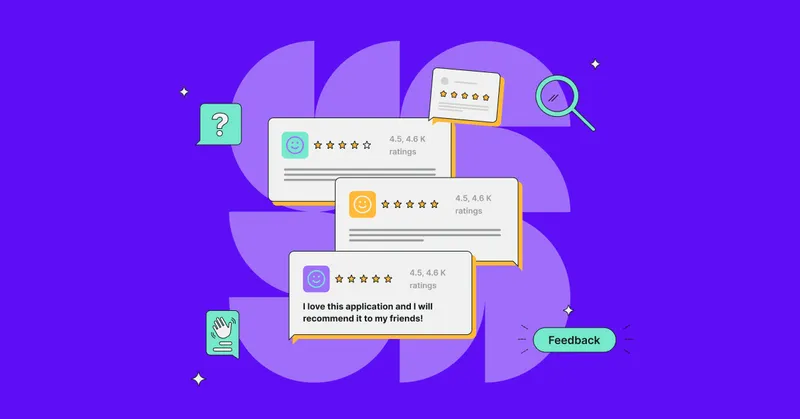
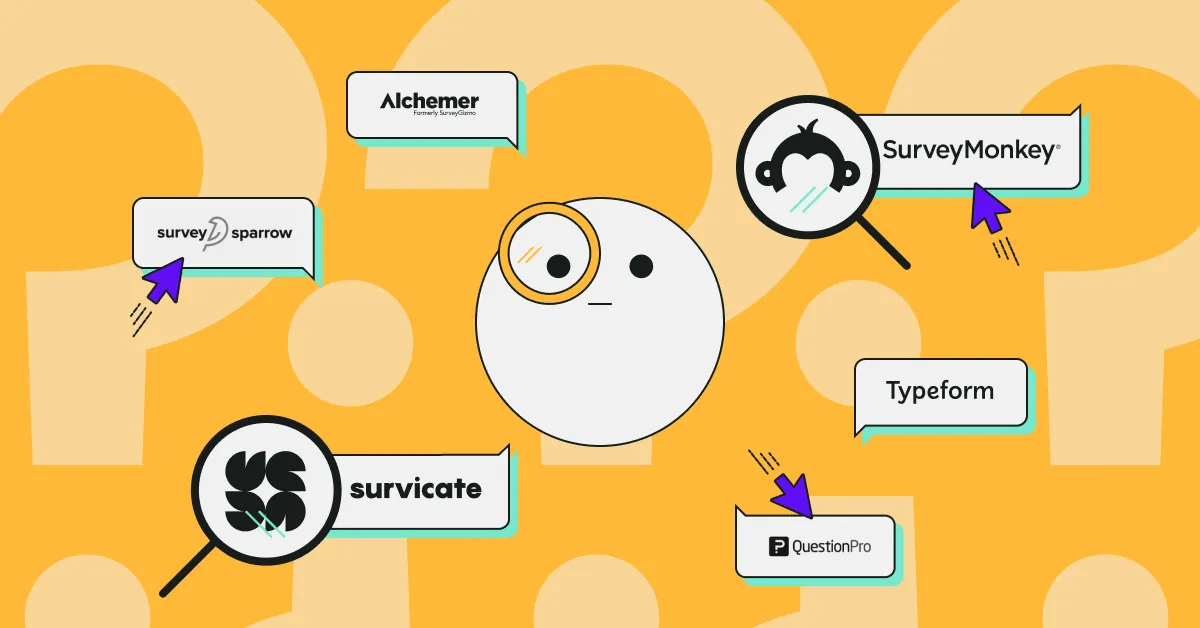
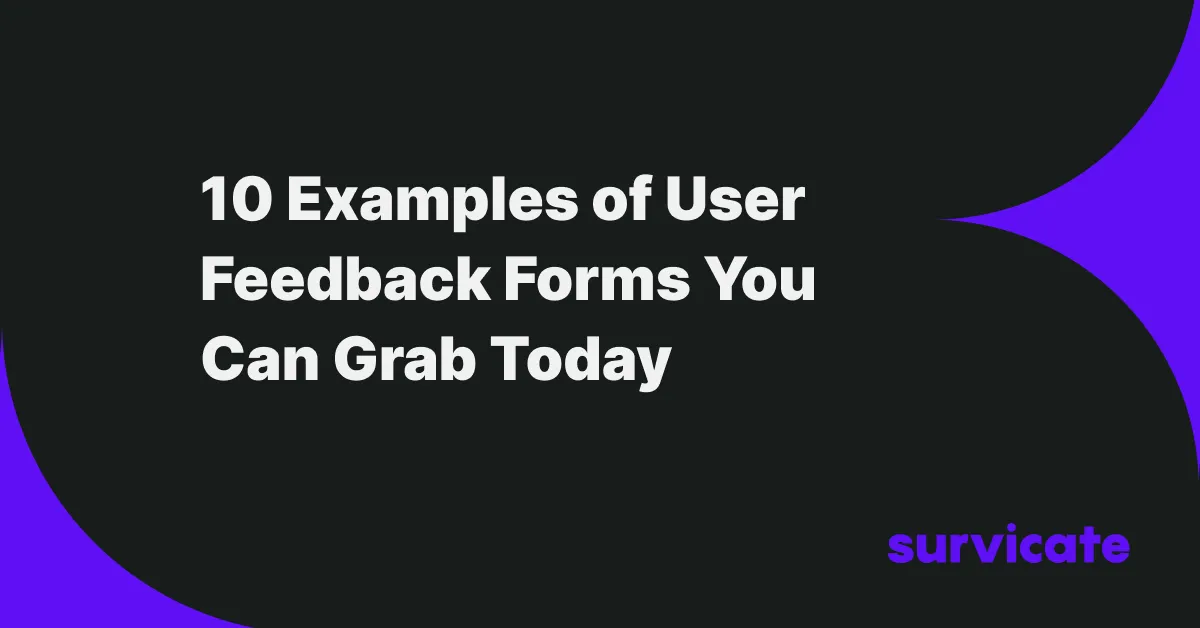
.png)

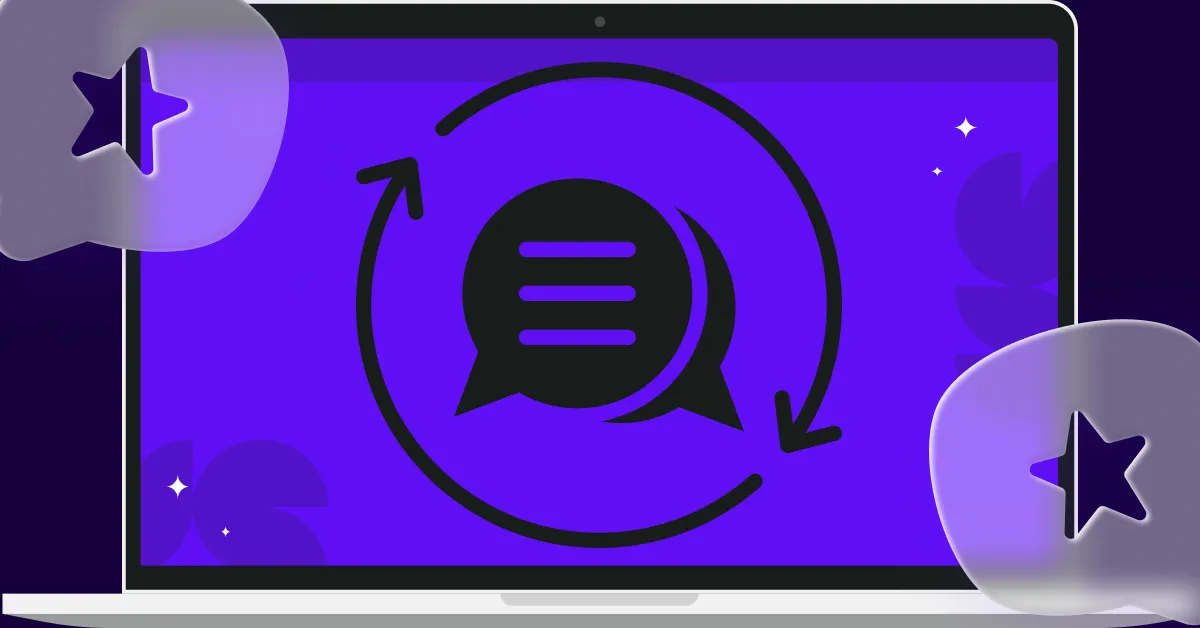

.svg)

.svg)



